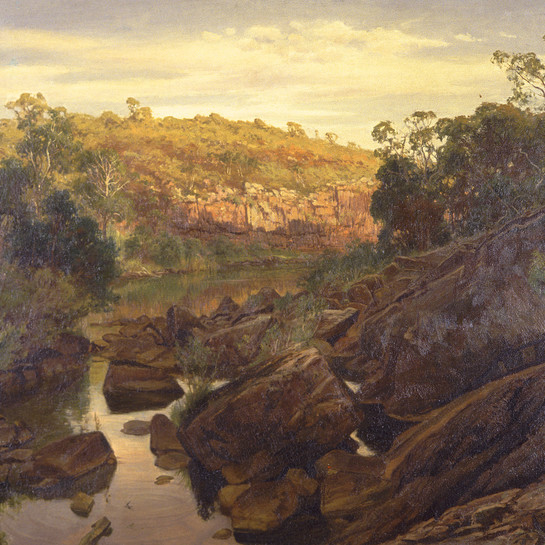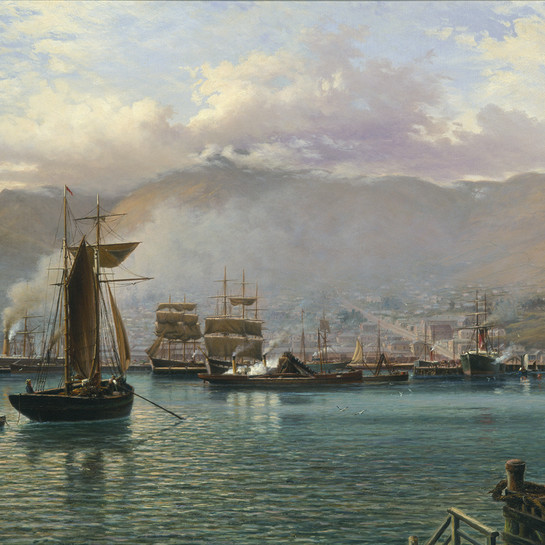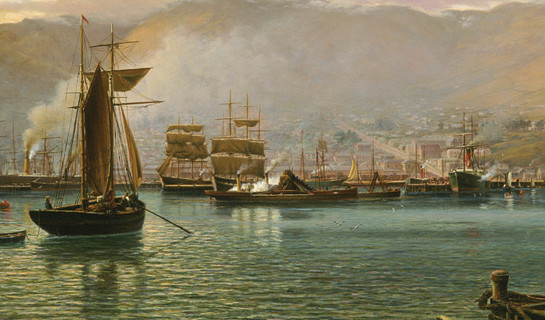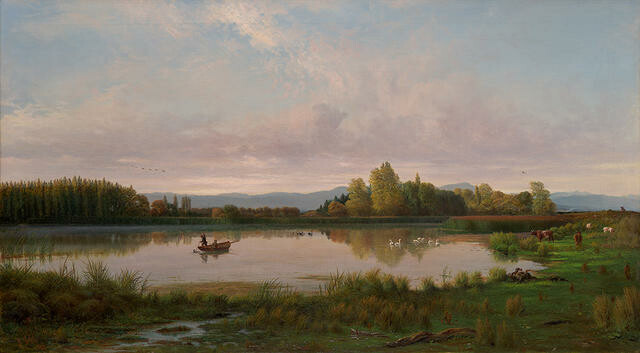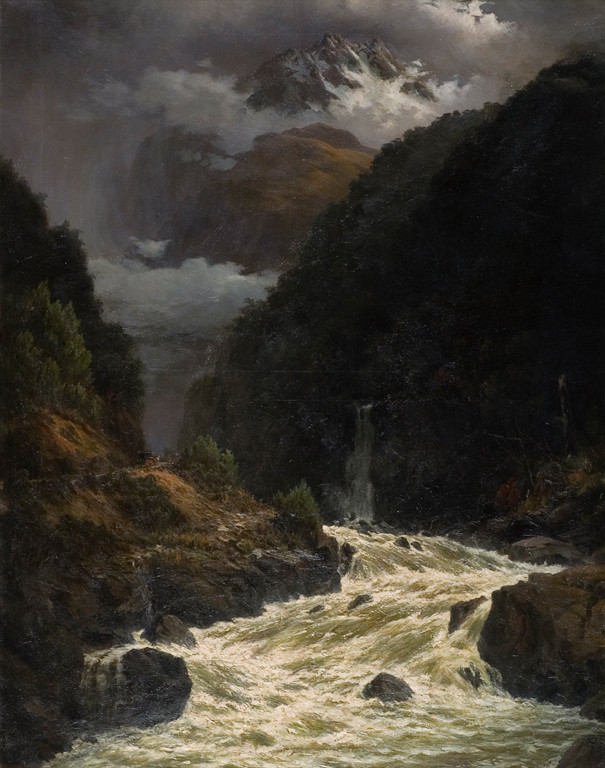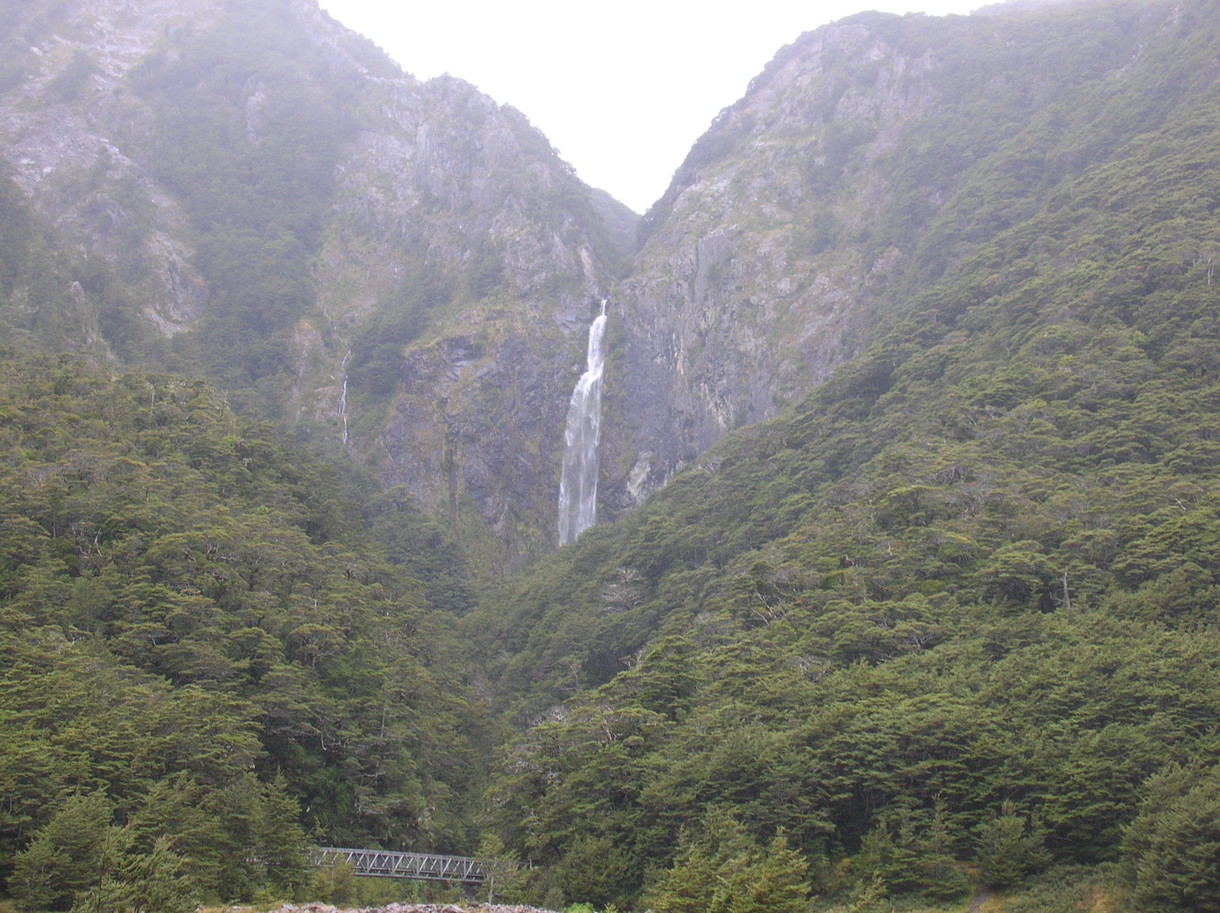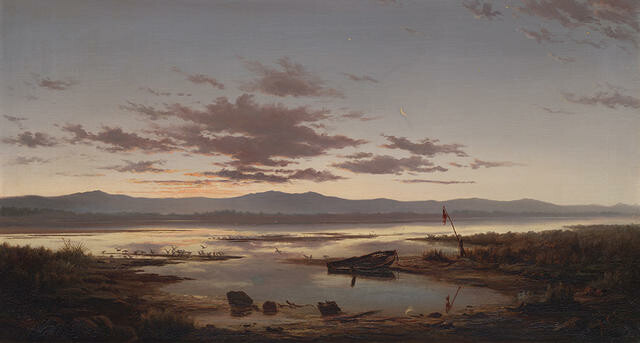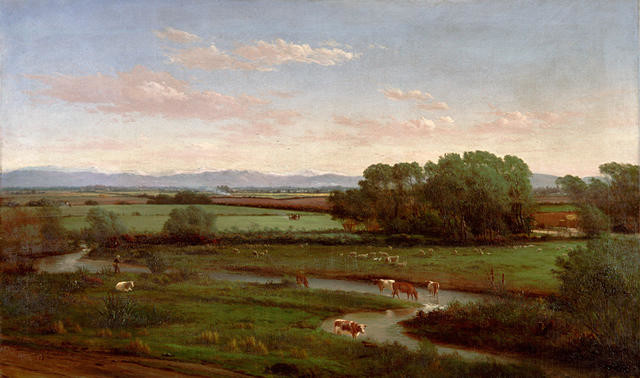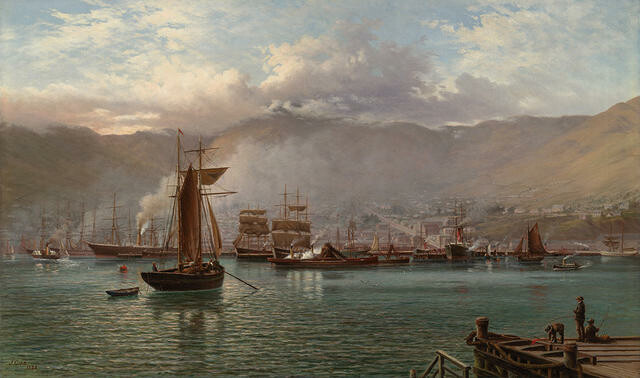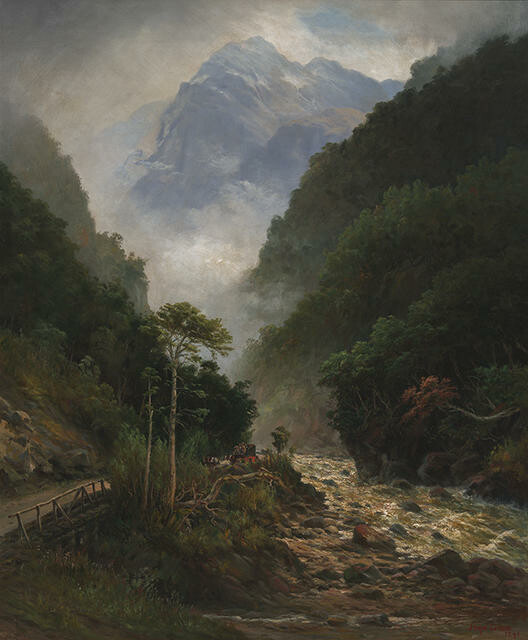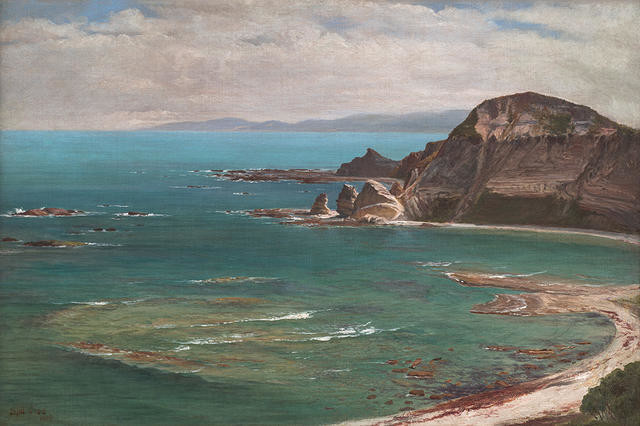John Gibb
Scotland / Aotearoa New Zealand, b.1831, d.1909
Bottle Lake
- 1882
- Oil on canvas
- Presented to the Canterbury Society of Arts by W Reece, 1902; given to the Gallery in 1932
- 1025 x 1595 x 135mm
- 69/164
Tags: animals, birds (animals), boats, lakes (bodies of water), landscapes (representations), mountains, natural landscapes, people (agents), reflections (perceived properties), trees
About the artist
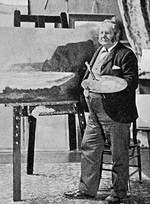
John Gibb in his studio
The Weekly Press, 12 December 1900, p. 62
Image supplied by Christchurch City Libraries (CCL-PhotoCD07-IMG0022)
Bottle Lake appears revealed at Gibb’s favoured time of day, when the sun is low on the horizon and the sky is luminous with colour. On a boat in the lake some eeling is underway. Sunlight streams across the landscape, softly striking clouds and treetops, while the grass at the water’s edge is absolutely radiant in streaks of vivid green. The scene is highly detailed and the eye is encouraged to linger on the seductive serenity Gibb has provided.
(Endless Light, 29 June 2019 – 8 March 2020)
Exhibition History
John Gibb, 18 December 2015 – 28 August 2016
Bottle Lake used to be part of the Waitikiri swamplands that lay to the north-east of Christchurch. Before the land around the lake was purchased by English settler Edward Reece, twenty years before Gibb painted this work, this was an important area for Ngāi Tahu, being rich with eels and other fish – as referenced by Gibb's inclusion of fishermen catching an eel. Much of Waitikiri was drained and turned over to pasture – and, more recently, housing for Christchurch's growing population. A visit to the nearby Travis Wetland Nature Heritage Park gives the visitor some idea of what Waitikiri would have been like in the nineteenth century.
Gibb was commissioned to paint Bottle Lake by William Reece, the son of Edward Reece. It is thought that the view is taken from Reece's homestead, which was also named Waitikiri.
Bottle Lake, about 8 kilometres north-east of Cathedral Square, is also known as Waitikiri and was used as an eeling lagoon by Ngāi Tahu. In 1862 Edward Reece bought the land around the lake and built his homestead, naming it 'Waitikiri'. As John Gibb's painting shows, Reece introduced cattle and exotic trees to his property. In his precise, academic realist manner, Gibb painted many homesteads of Canterbury farmers throughout his career. This work was commissioned by William Reece, one of Edward's sons. Gibb was born in Cumbernauld, Scotland. He received tuition from John McKenzie at Greenockand, in 1861, began exhibiting at the Royal Scottish Academy. In 1868, however, he began exhibiting at the more progressive Royal Glasgow Institute of Fine Arts. Gibb emigrated to New Zealand in 1876. He settled in Christchurch, was a founding member of the Canterbury Society of Arts and travelled widely in New Zealand, painting many different regions. (Label date unknown)

